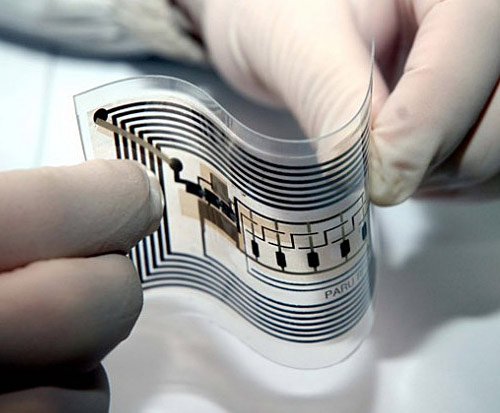
New RFID Tag Could Mean the End of Bar Codes
Lines at the grocery store might become as obsolete as milkmen, if a new tag that seeks to replace bar codes becomes commonplace.
Researchers from Sunchon National University in Suncheon, South Korea, and Rice University in Houston have built a radio frequency identification tag that can be printed directly onto cereal boxes and potato chip bags. The tag uses ink laced with carbon nanotubes to print electronics on paper or plastic that could instantly transmit information about a cart full of groceries.
The new tag, reported in the March issue of IEEE Transactions on Electron Devices, costs about three cents to print, compared to about 50 cents for each silicon-based tag. The team hopes to eventually bring that cost below one cent per tag to make the devices commercially competitive. It can store one bit of information — essentially a 1 or a 0 — in an area about the size of a business card.
“The work is impressive,” comments Thomas N. Jackson of Penn State University in University Park, who is also developing flexible electronics. He thinks it will be difficult to compete with silicon, which is well established in the realm of consumer products packaging. But similar technology could be used to do things silicon can’t do, he says, such as make smart bandages that can sense infections or freshness-sensing food packaging.
And for those who would rather not have their food broadcast radio waves after getting it home, fear not. Tour says the signals can be blocked by wrapping groceries in aluminum foil.
Sunchon National University
Rice University









